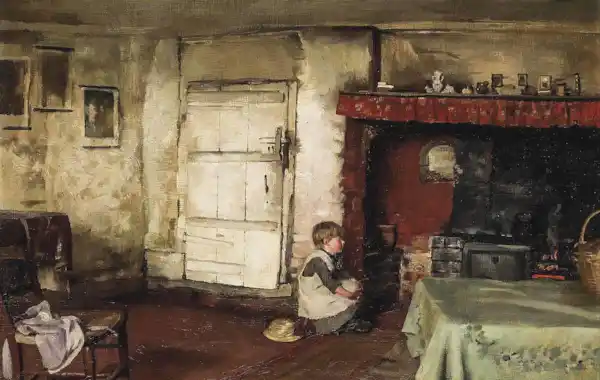Jayne Shrimpton reflects on what the book 'Lark Rise to Candleford' can tell us about rural life was like for our 19th-century ancestors.
 Of all the books recounting bygone eras, few are as evocative as Flora Thompson’s Lark Rise to Candleford (1945), originally published as Lark Rise (1939), Over to Candleford (1941), and Candleford Green (1943).
Of all the books recounting bygone eras, few are as evocative as Flora Thompson’s Lark Rise to Candleford (1945), originally published as Lark Rise (1939), Over to Candleford (1941), and Candleford Green (1943).
Described by Phillip Mallett, introducing the Oxford 2011 edition, as a ‘lightly fictionalised memoir’ of Thompson’s childhood in the poor Oxfordshire hamlet of Juniper Hill during the 1880s, the trilogy offers family historians a detailed portrayal of daily life for our late-Victorian rural ancestors.
FOR MORE FAMILY HISTORY INSPIRATION, REGISTER FOR OUR WEEKLY NEWSLETTER HERE
The author, personified as the book character ‘Laura’, described Juniper Hill (‘Lark Rise’) as a poor hamlet tucked into the north-east corner of Oxfordshire, the surrounding landscape drab fields of brown clay, until spring green shoots ripened into a sea of golden corn. It comprised some 30 scattered cottages and an inn forming a loose circle surrounded by a track, a network of pathways connecting separate plots or clusters of houses.
19th-century rural housing
A few hamlet houses were old, pre-Enclosure thatched cottages with whitewashed walls and diamond-paned windows, but most were newer box-like stone or brick buildings with blue-slate roofs. Each had just one or two upstairs bedrooms divided by screens or curtains to accommodate parents and children.
The downstairs usually comprised only one room, the poorest living spaces being plain, with simple tables, a few chairs and stools, and old sacks as hearth rugs. However, other cottages were cosier, furnished with dressers of crockery, pictures on the walls, upholstered seats, colourful hand-made rag floor-rugs, and pots of geraniums or fuchsias on the windowsills. Some displayed domestic heirlooms including grandfather clocks, gate-leg tables and rows of pewter: relics of earlier times when country life was easier.
Most household incomes were identical, ten shillings a week being the standard farm-labourer’s wage in the locality. The first charge on the precious ten shillings was rent, for many Lark Rise cottages belonged to small tradesmen in the market town, who charged between one shilling and half a crown weekly.
Rural occupations
When the Lark Rise contingent arrived for work, after helping the carter prepare the horses they harnessed their teams and led them into the fields. There were usually three or four ploughs to a field, each drawn by three horses, a boy at the head of the leader, the ploughman behind at the shafts.
They ploughed all day, stopping for lunch and short breaks, until the field was furrowed rich brown. Afterwards a horse-drawn roller broke down the clods, the harrow combed out weeds and invasive grasses and later, seeds were sown, crops thinned out and hoed, eventually mown and the whole process begun over again.
Other work included clearing ditches, sawing wood, hedging, sheep-shearing, thatching or mowing, according to the season. Supervised by the farm bailiff, labourers worked hard for their pitiful ten shillings. But their virtue was endurance: vowing never to flinch from pain or hardship, they took pride in a job well done. They all had nicknames and most still spoke the local dialect in which vowels were broadened or doubled, ‘boy’ becoming ‘boo-oy’ and, ‘pail’ ‘pay-ull’, other words being run together or syllables slurred. Their conversations were peppered with old proverbs and similes; songs were sung, stories regaled, the coarser banter kept for men’s ears only, in the fields.
Read Jayne Shrimpton's in-depth article on Lark Rise and social history in the August 2023 issue of Family Tree magazine. Get your copy here.
About the author
UK-based professional dress historian, portrait specialist and photo ‘detective’ since the 1980s, Jayne Shrimpton is internationally known for her many books and regular columns in genealogy and social history magazines. Visit her website.
Jayne Shrimpton







